

Popcorn is deeply rooted in the Americas. Indigenous people in present-day Central and South America were among the first to cultivate and consume popcorn. Archaeological evidence suggests that corn was popped in Peru as early as 4700 B.C. Popcorn gained popularity among European explorers and colonizers once they encountered it in the Americas. These days, popcorn is a multi-billion dollar business, with lots of options, from ready-to-eat to do-it-yourself, and more flavors than necessary. Americans consume 56 quarts of popcorn per capita annually. A whole grain that is high in fiber and, at least in some cases, low-fat, popcorn has been called the perfect snack food. Grab some napkins and a fizzy beverage, and let’s get poppin’ on 24/7 Wall St.’s 11 popcorn brands to try, listed alphabetically.
Act II
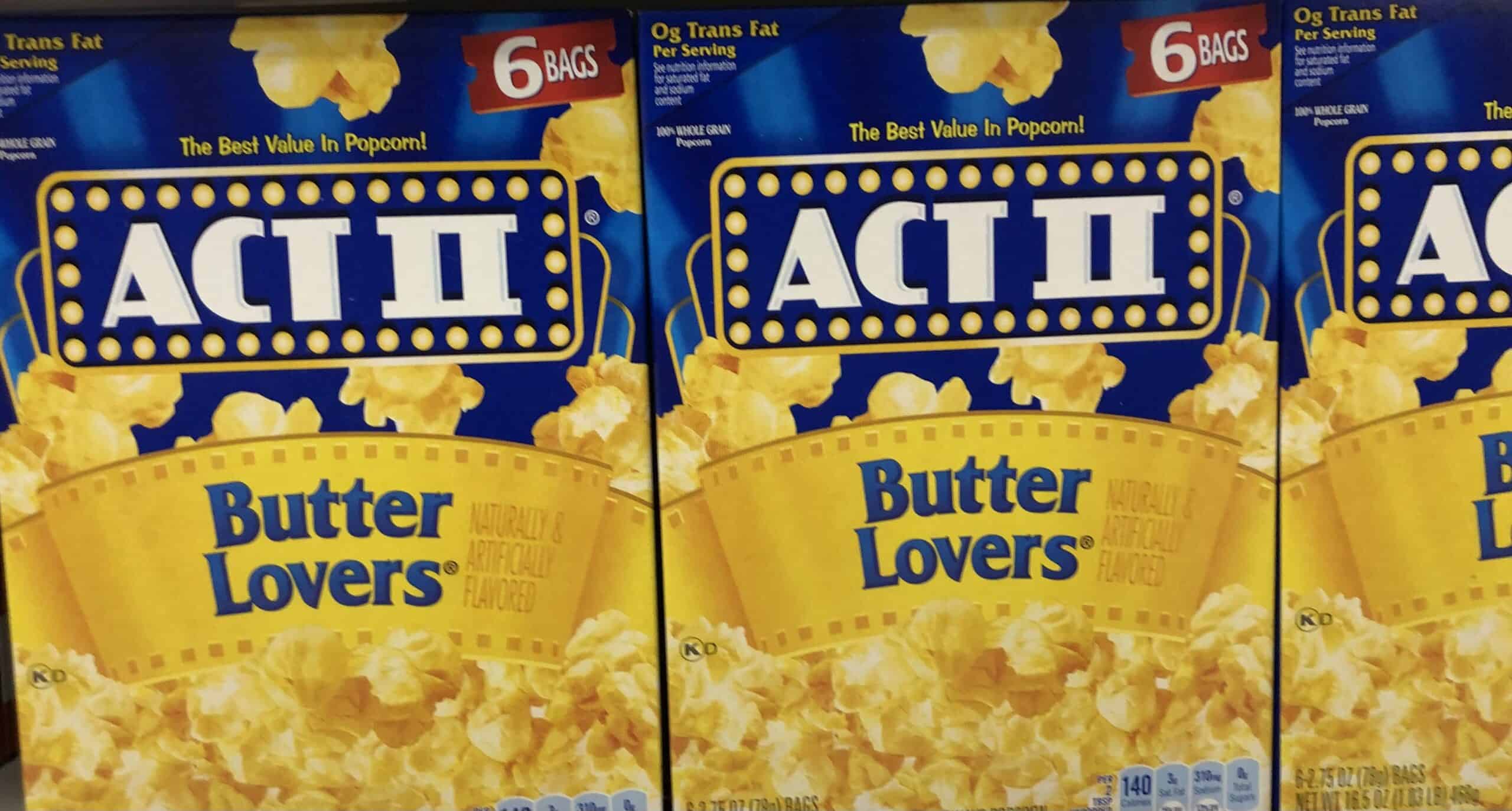
- Parent/owner: ConAgra
- Introduced: 1984
Movie Theatre Style Popcorn

Introduced in 1984, Act II is the first microwavable popcorn brand. Act II was originally Act I, which contained real butter, necessitating refrigeration. Act II doesn’t require refrigeration because it uses palm oil instead of butter. Palm oil is commonly used in microwaveable popcorn thanks to its high smoke point, desirable flavor, and long shelf life. Palm oil is high in saturated fats, so if cholesterol is an issue, you’d want to eat this brand sparingly, and who eats popcorn sparingly? Especially when it has all of the yummy characteristics of movie theatre popcorn, sans the exorbitant cinema concession stand price tag. If you’re a fan of the greasy, buttery-flavored popcorn served at the cinema, Act II is the brand for you! Unless, you know, cholesterol…
Angie’s Boom Chicka Pop
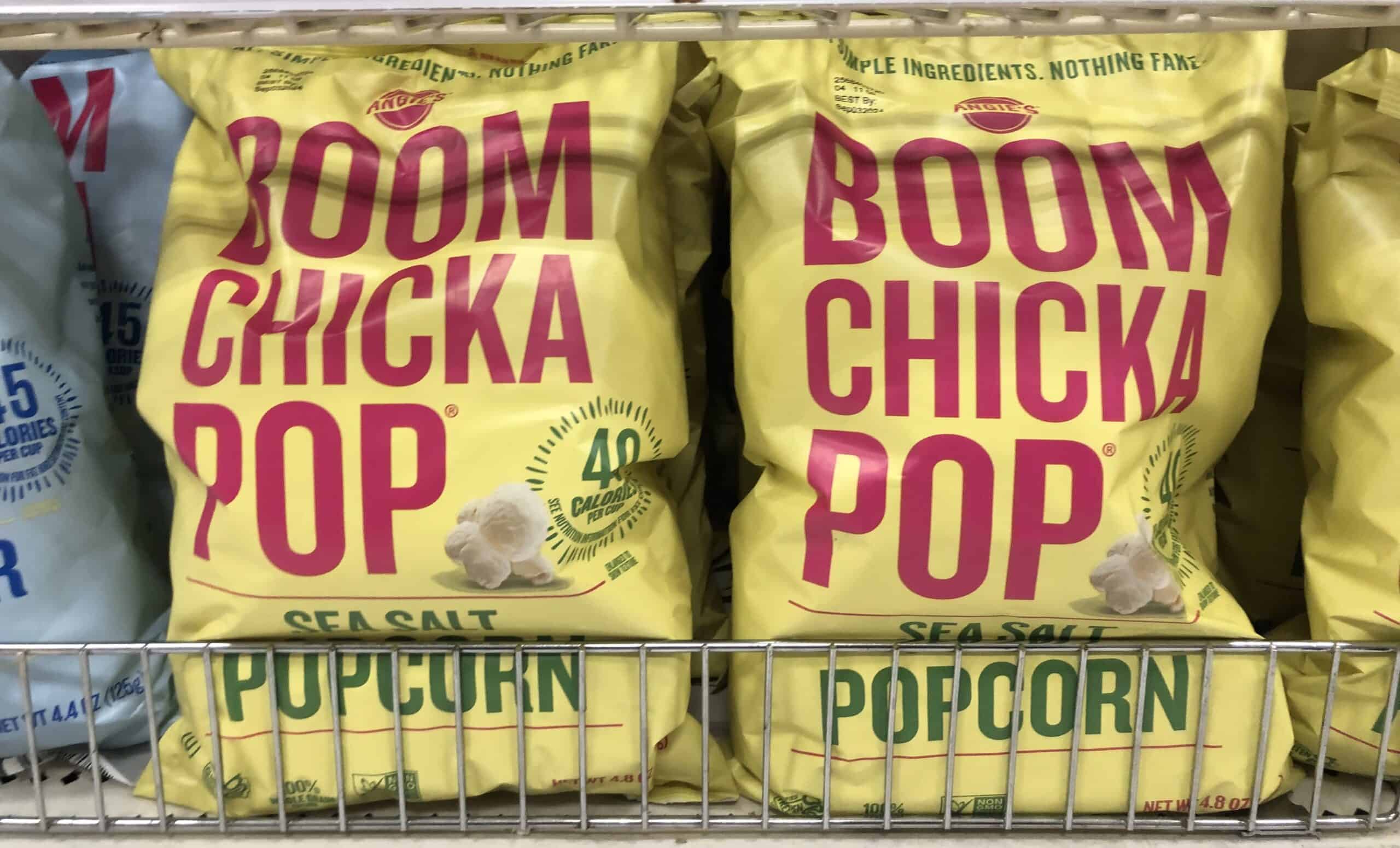
- Parent/owner: ConAgra
- Introduced: 2002
Boom Chicka Yum
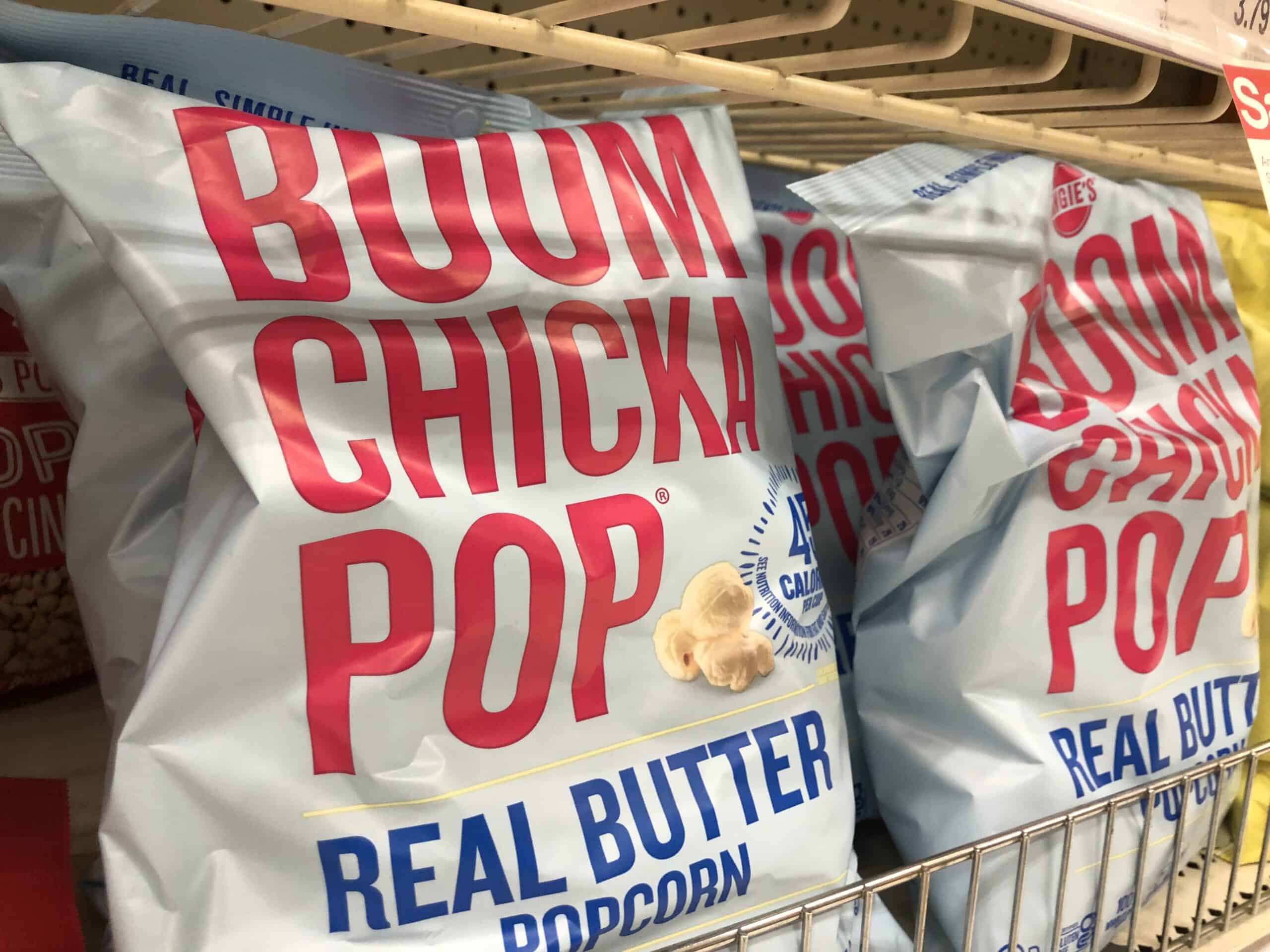
Though this is the second ConAgra product featured in 24/7 Wall St.’s list of 12 popcorn brands to try, Angie’s Boom Chicka Pop won’t be the last. ConAgra is a Fortune 500 company that sells food products under a variety of brands, including 10+ popcorn brands. Angie’s Boom Chicka Pop, established in 2011, is sold as already popped, ready-to-eat popcorn in a bag. Flavors range from sea salt to sweet and salty kettle corn to cheddar cheese. After acquiring Boom Chicka Pop in 2017, ConAgra added a microwavable line of Boom Chicka Pop popcorn in 2018.
Good and Gather
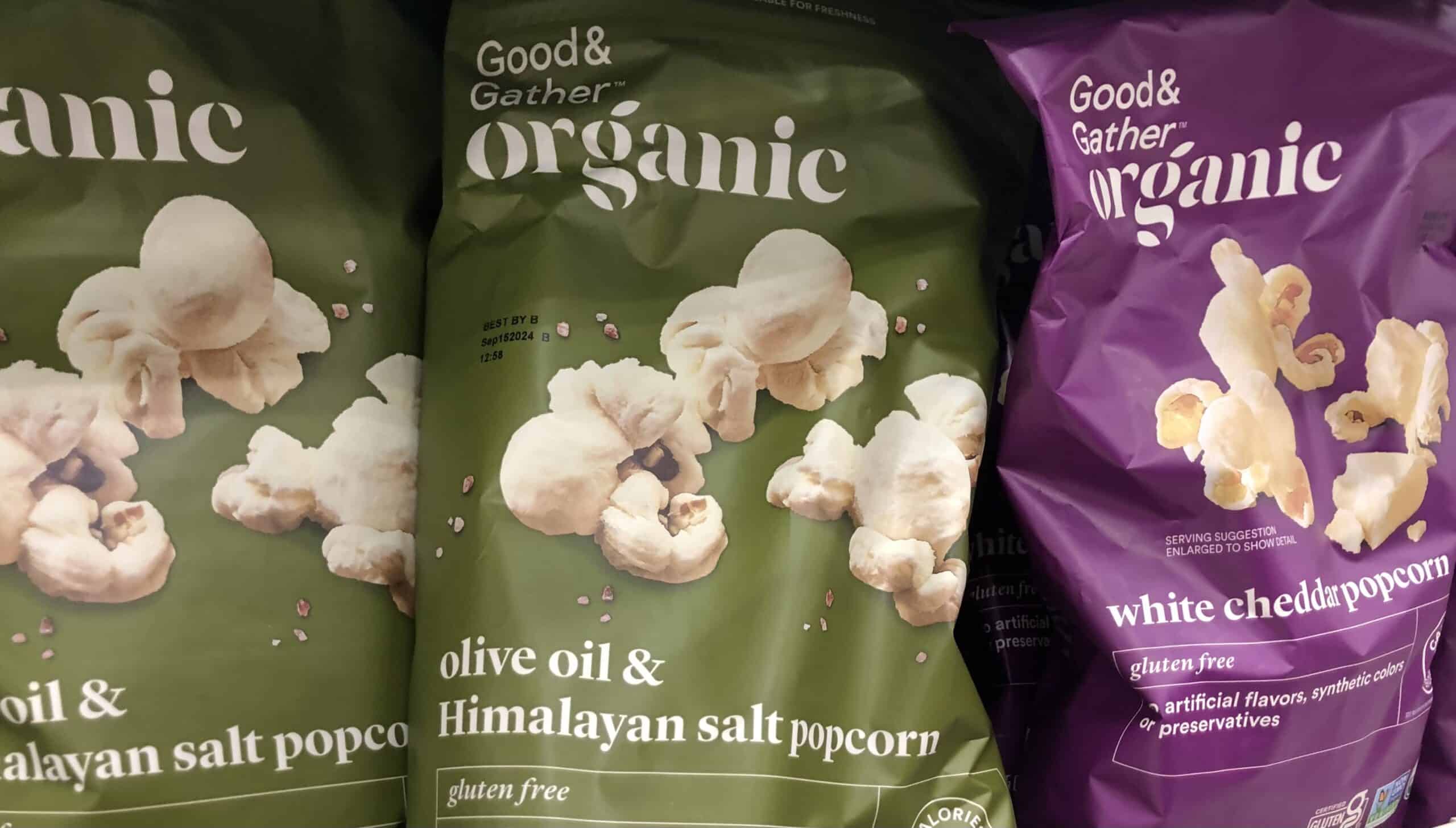
- Parent/owner: Target
- Introduced: 2019
Choices Galore
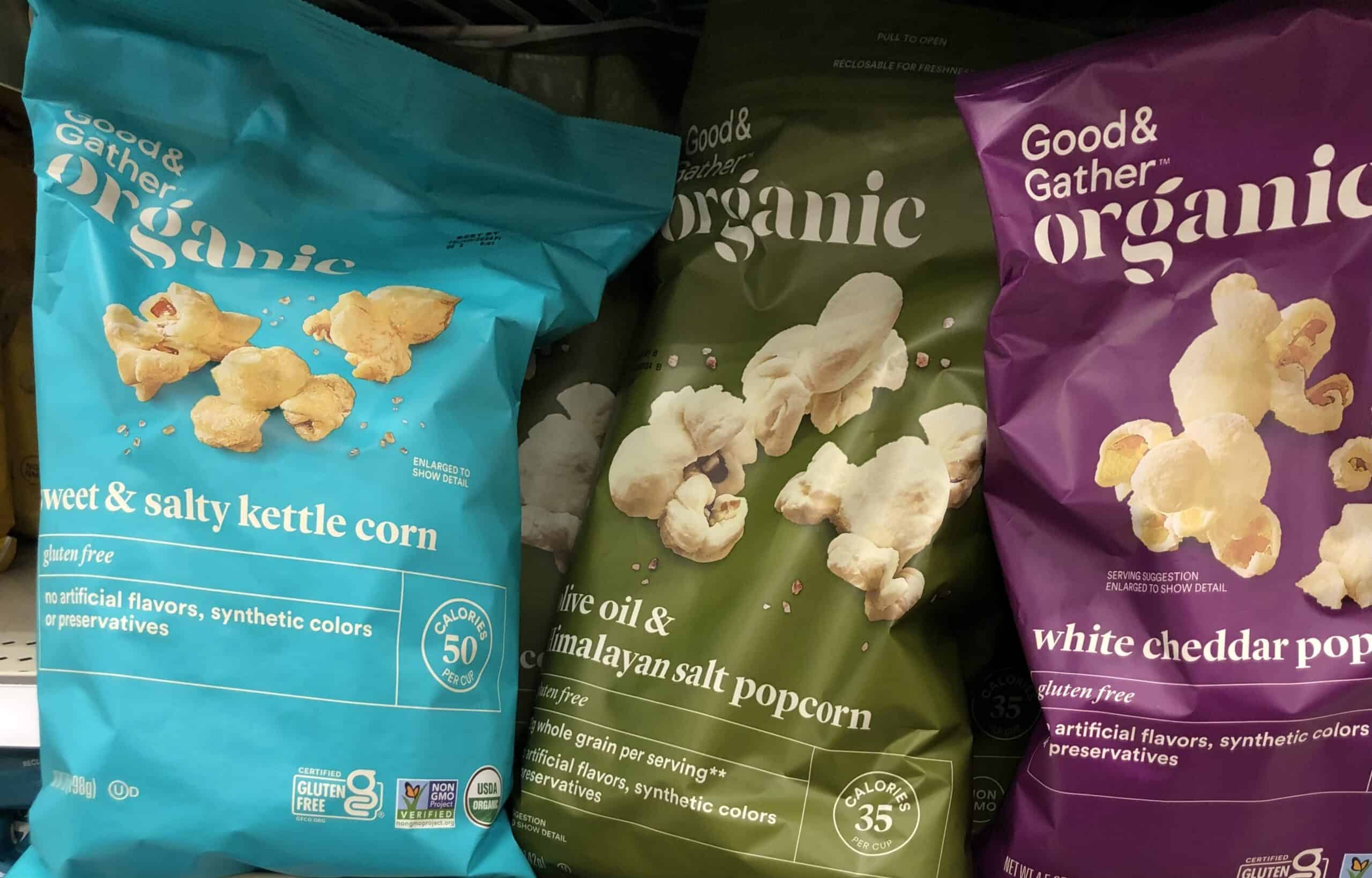
Good and Gather is Target’s newest flagship brand, introduced in 2019. Good and Gather popcorn is the already-been-popped, ready-to-eat variety. From sweet kettle corn to salty to cheesy, Good and Gather covers the flavor bases. With between 35 calories (olive oil and Himalayan salt) and 150 calories (white cheddar) per cup, Good And Gather is a splendid alternative to chips. Paired with a Good and Gather strawberry-mango seltzer, you’re snacking mindfully.
Great Value
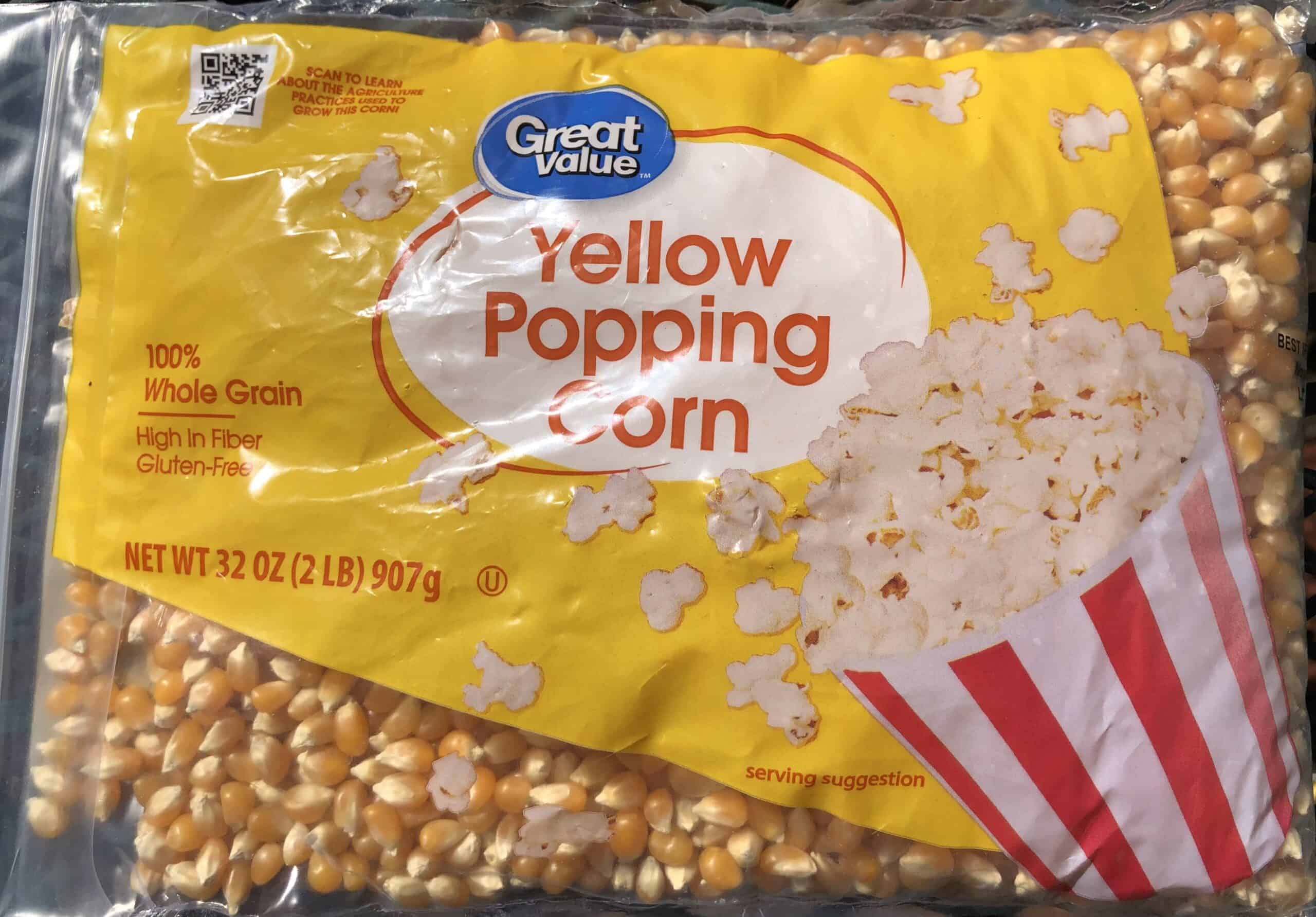
- Parent/owner: ConAgra
- Introduced: undetermined
No Frills Thrills
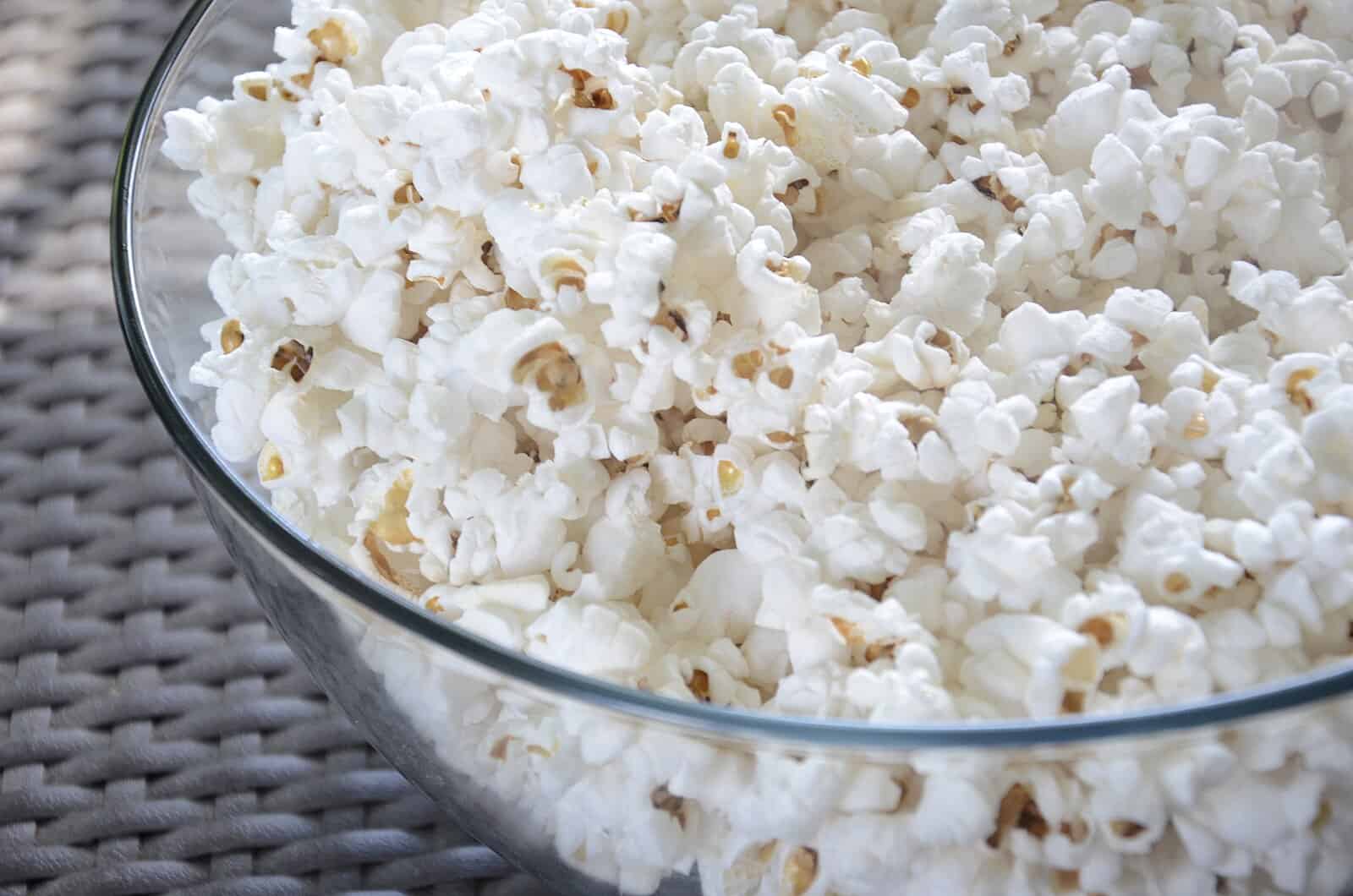
Some folks enjoy denigrating Walmart and its clientele. I suppose it makes them feel superior. Still, I proudly admit I’m a Walmart shopper. Those are my people. That’s where I feel at home. Produced by ConAgra, Great Value popcorn is every bit as tasty as say Orville Redenbacher’s, another ConAgra brand. Orville Redenbacher’s is also available at Walmart. But much pricier. So, cast your aspersions all you want, but we Walmart shoppers know a great value.
Lesser Evil
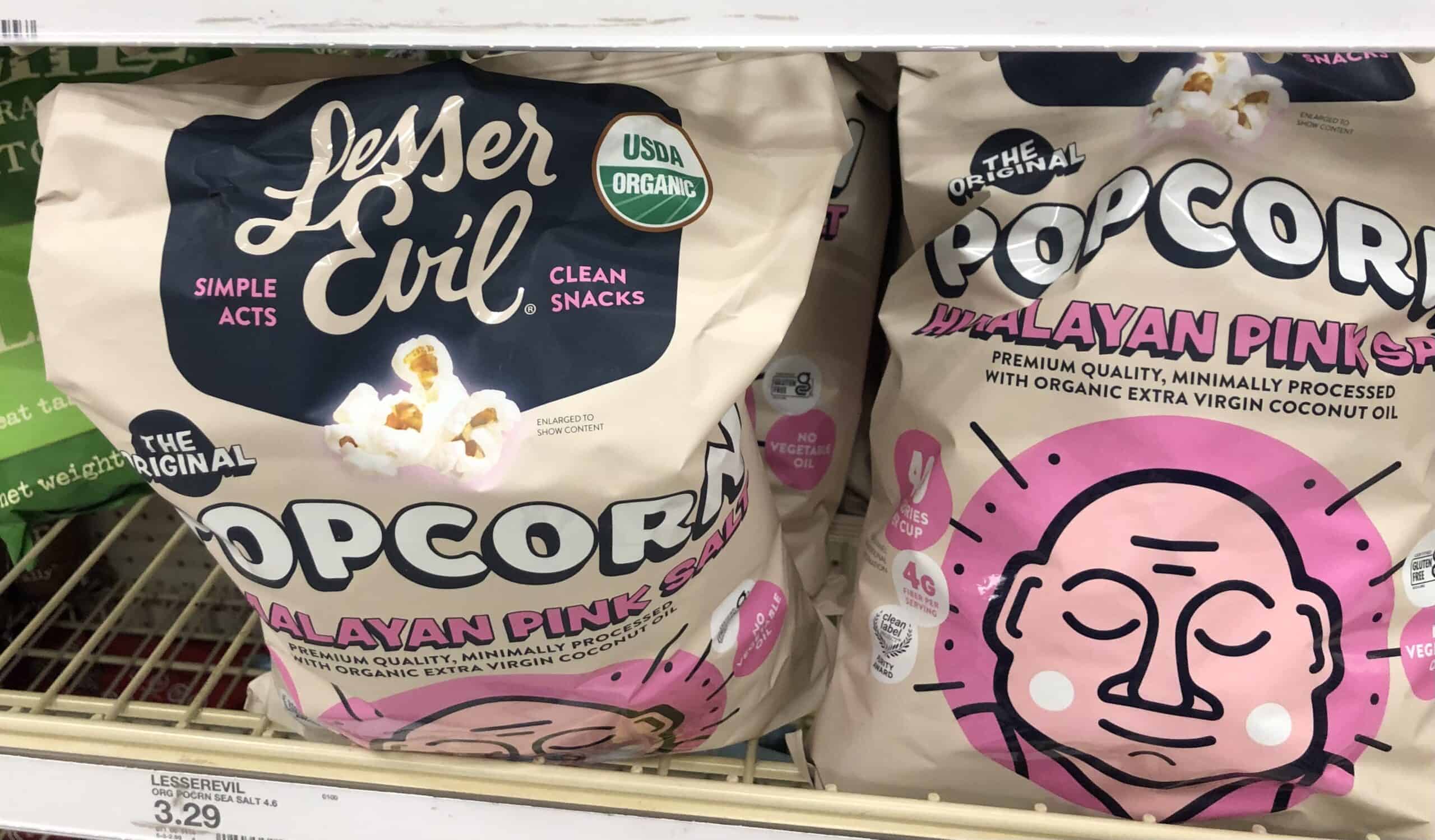
- Parent/owner: Charles Coristine
- Introduced: 2004
Sounds Familiar

In an election year, lesser evil doesn’t roll off the tongue in the way the makers of this product like it’s supposed to. Lesser Evil popcorn, introduced in 2004, was acquired by Charles Coristine in 2011. Coristine was a finance guy, killing himself working 20-hour days, feeling stressed and out-of-balance. Knowing nothing about the popcorn business, Lesser Evil’s healthful snack alternatives, and its guru mascot resonated with the avid meditator. Unlike most commercially available popcorn brands that are popped in vegetable oil, Lesser Evil is popped in coconut oil, which doesn’t contain trans-fats, aka trans fatty acids, which raise cholesterol. This alone makes Lesser Evil a dandy choice for those who have high cholesterol. Principally sold as a ready-to-eat product, Lesser Evil does sell kernels for home popping, too. As for CEO Charles Coristine, he now goes to bed at 9:00 P.M.
Market Pantry: DIY Popcorn
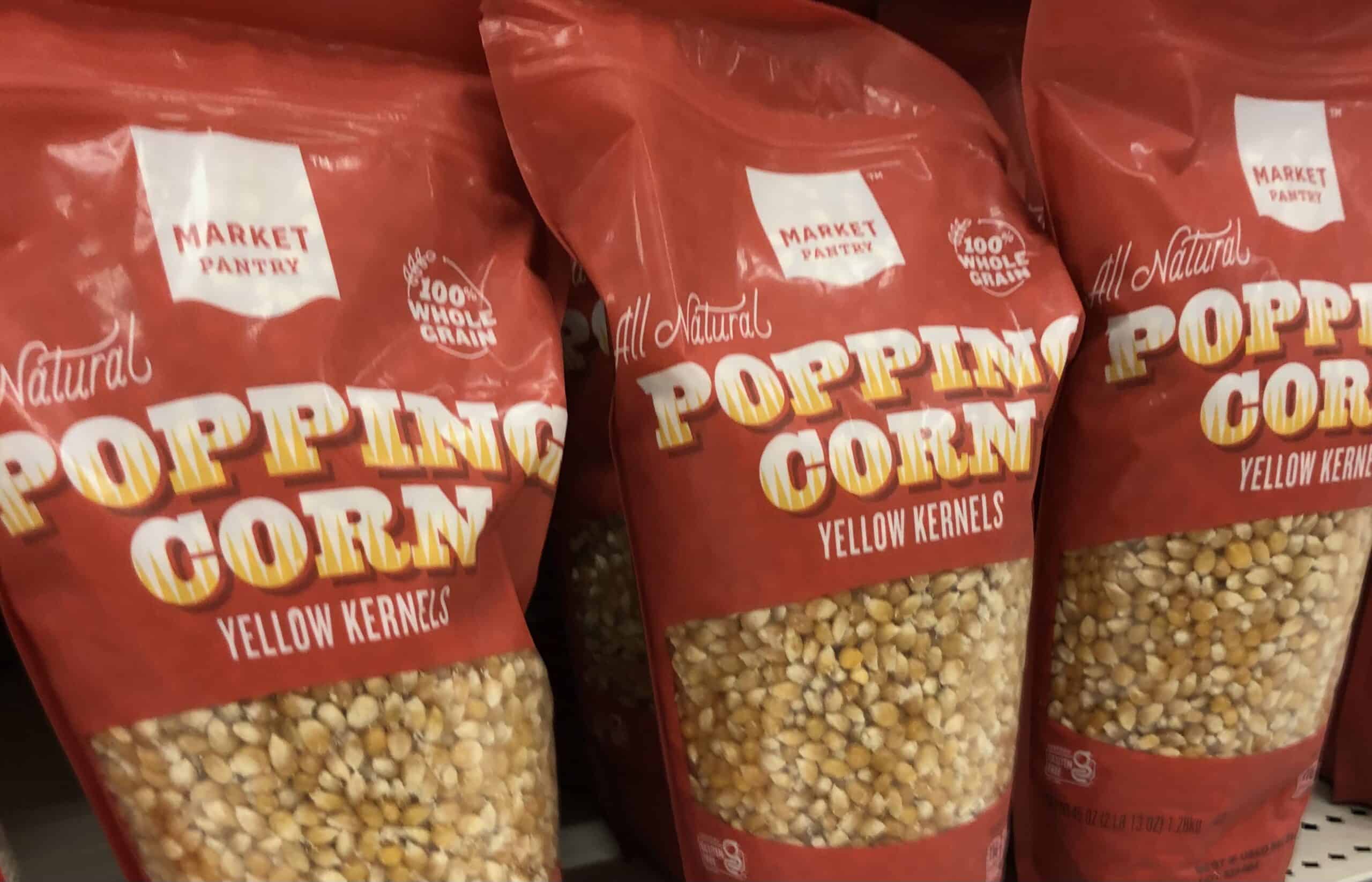
- Parent/owner: Target
- Introduced: 2001
Market Pantry: Microwave Popcorn
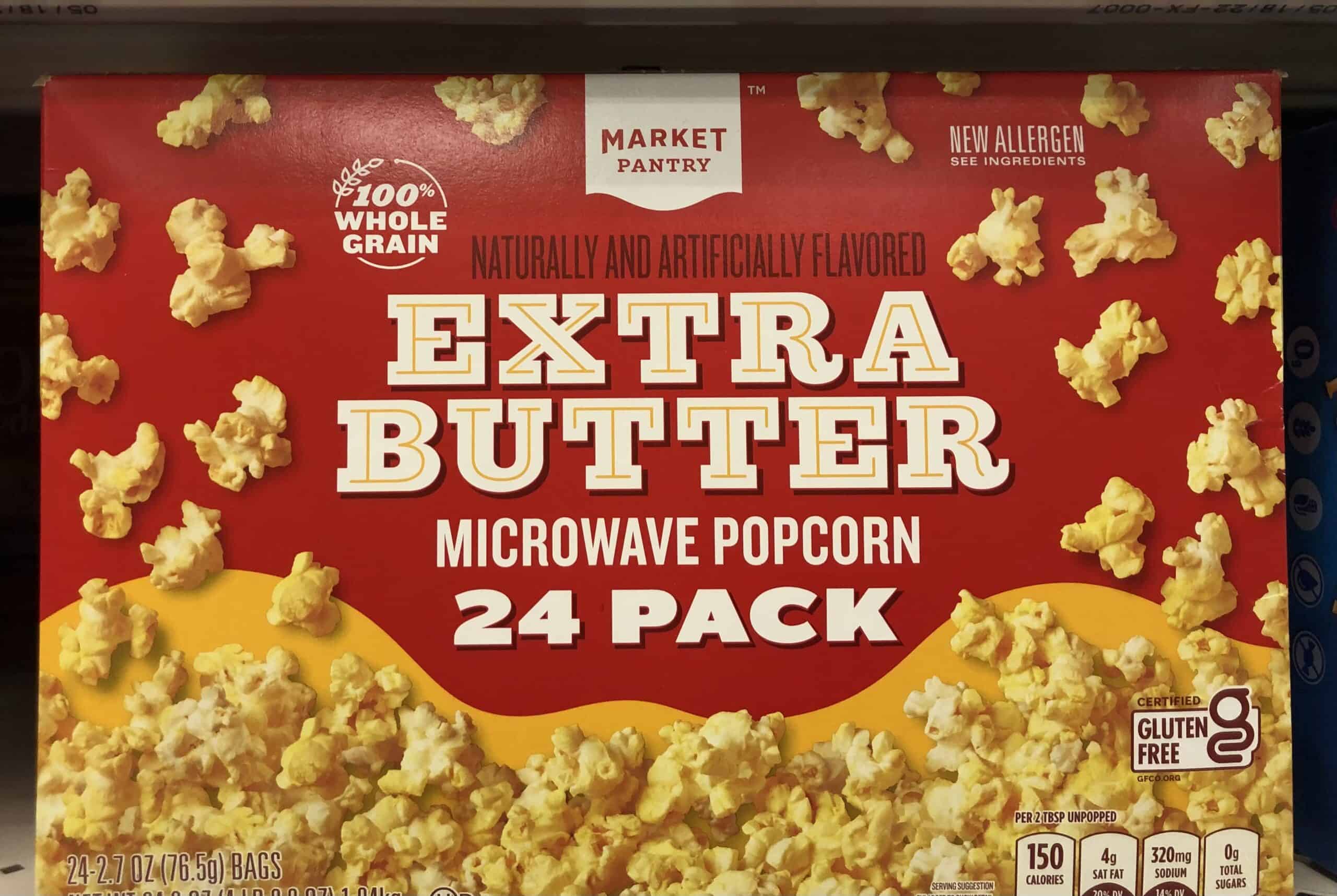
Introduced in 2001, Market Pantry is another one of Target’s flagship brands. Whereas Good and Gather focuses on already popped ready-to-eat popcorn, Markey Pantry covers the microwave and do-it-yourself varieties. The DIY kind is as healthful as you make it, while Market Pantry microwavable popcorn is popped in palm oil. This oil is commonly used across most microwaveable popcorn brands, thanks to its high smoke point, desirable flavor, and long shelf life. As mentioned, palm oil is high in saturated fats, which raise cholesterol. so, while popcorn is a great snack, microwavable popcorn should be an infrequent treat.
Orville Redenbacher’s

- Parent/owner: ConAgra
- Introduced: 1970
Orville Redenbacher was a Real Person

If you’re of an age, you might recall the ad campaign for this brand that featured Orville Redenbacher, the man, popping Orville Redenbacher, the popcorn, blowing the top of the competition, while claiming his brand was lighter and fluffier with fewer old maids. Redenbacher, you see, was a food scientist who perfected hybrid strains of corn specifically for popping. The large, puffy popcorn we take for granted today, is the result of Redenbacher’s interest and diligence. Like the microwavable brands before it, Orville Redenbacher’s contains palm oil. Thus far ConAgra has resisted the ready-to-eat option for Orville Redenbacher’s, but with a market that seems to be begging for more, it’s undoubtedly just a matter of time.
Pop Secret
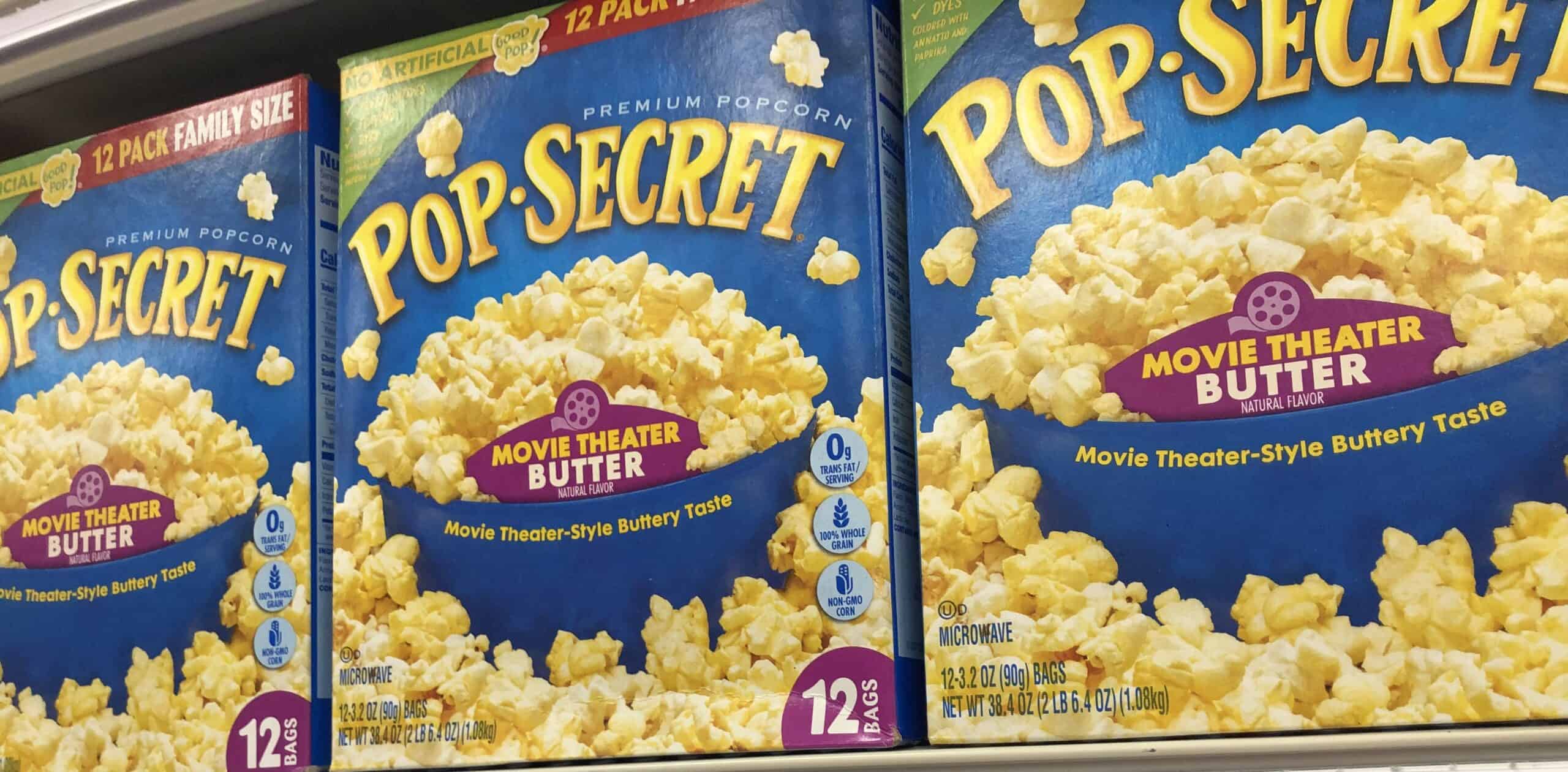
- Parent/owner: Snyder’s-Lance/Campbell Soup Co.
- Introduced: 1986
We All Scream For Popcorn

Pop Secret is the official popcorn of Disneyland and Disneyworld, so you know it’s delicious. The good news is you can enjoy this brand in the comfort of your home, without the expense! Pop Secret has a complete line of popcorn, from DIY kernels to microwavable, to ready-to-eat in a bag, which was introduced in 2014. Yes, Virginia, Pop Secret microwavable has palm oil. Pop Secret has increased its market share by rolling out Tumbler Pop Secret Labs, which launches different apps and tools like Popsearch, which connects users to movie streaming platforms, and Popperfect, which listens to your microwave and will alert you when it’s time to hit stop. What a time to be alive.
SkinnyPop

- Parent/owner: The Hershey Co.
- Introduced: 2010
Sweet and Salty
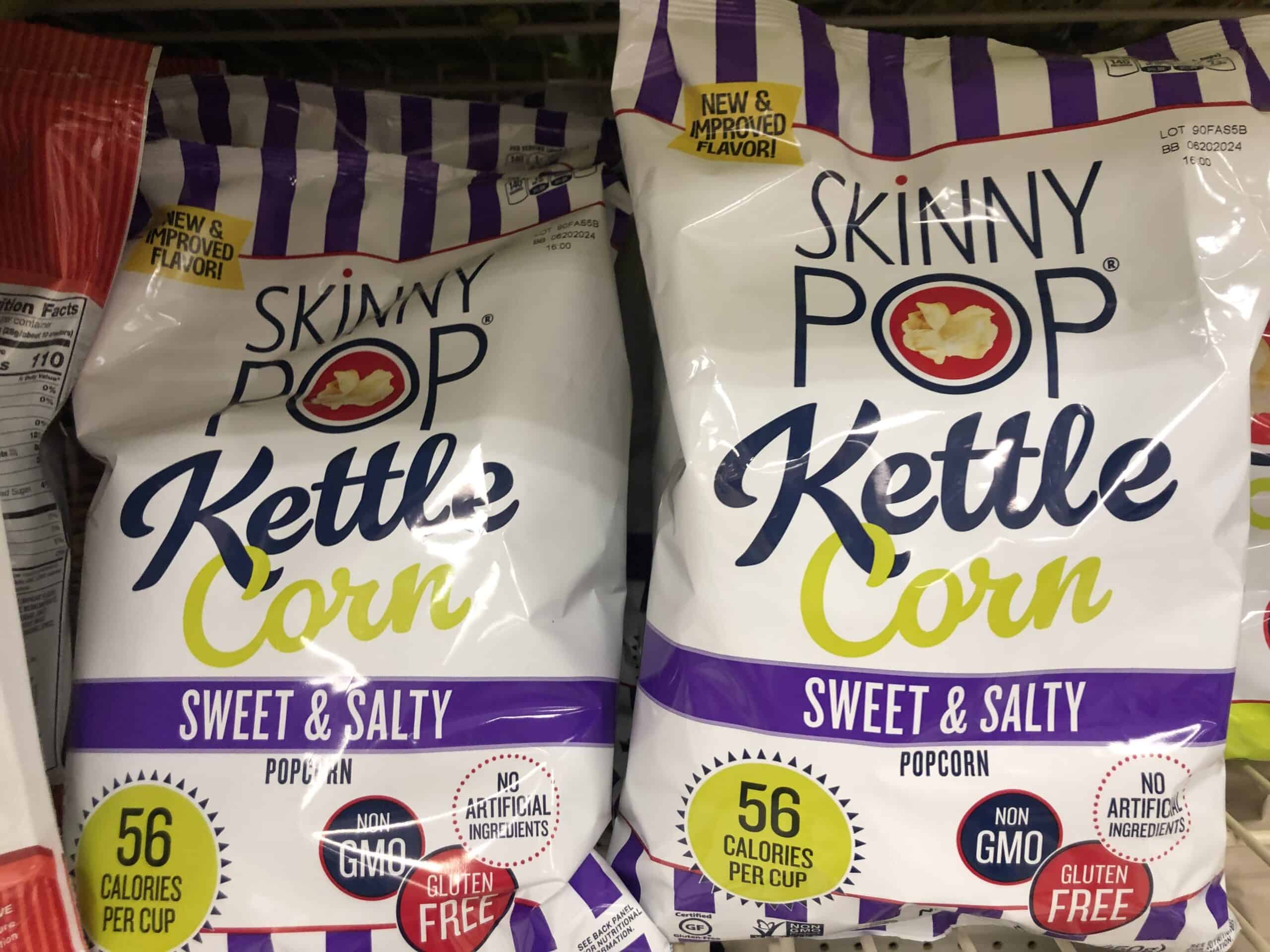
Of the 12 popcorn brands to try, SkinnyPop is quite possibly the most healthful ready-to-eat brand. Made with sunflower oil, which is polyunsaturated and rich in omega-6 fatty acids makes SkinnyPop an excellent choice for those with health concerns. Skinnypop’s kettle Corn is sweetened with evaporated cane sugar, which provides 7 grams, or about 1/4 of the recommended daily allowance of sugar. Not too shabby. SkinnyPop, which backs up its healthful claims by using top-quality ingredients is a brand that will make you feel good and that you can feel good about supporting.
Smartfood
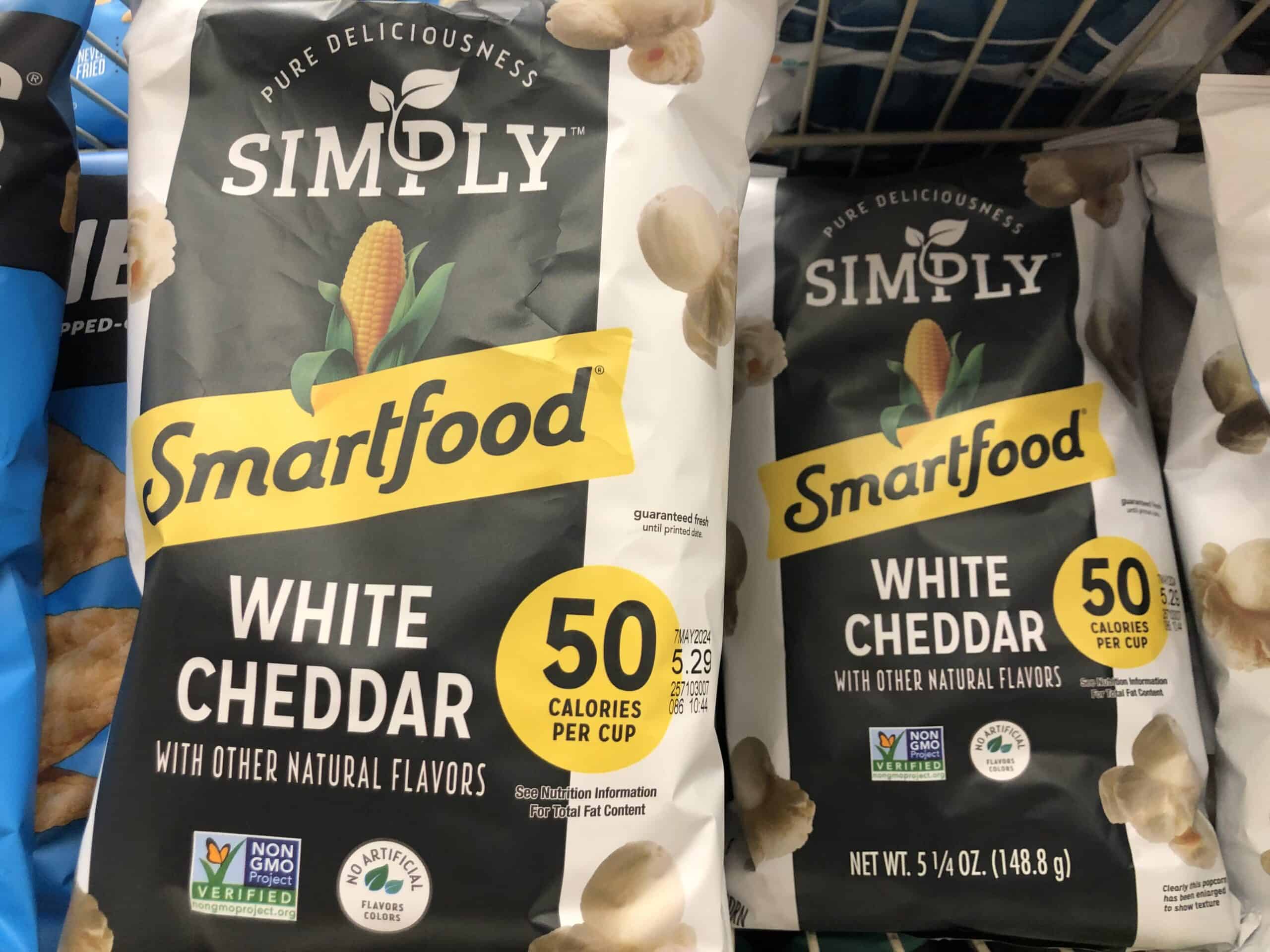
- Parent/owner: Frito-Lay
- Introduced: 1984
Simply Delicious
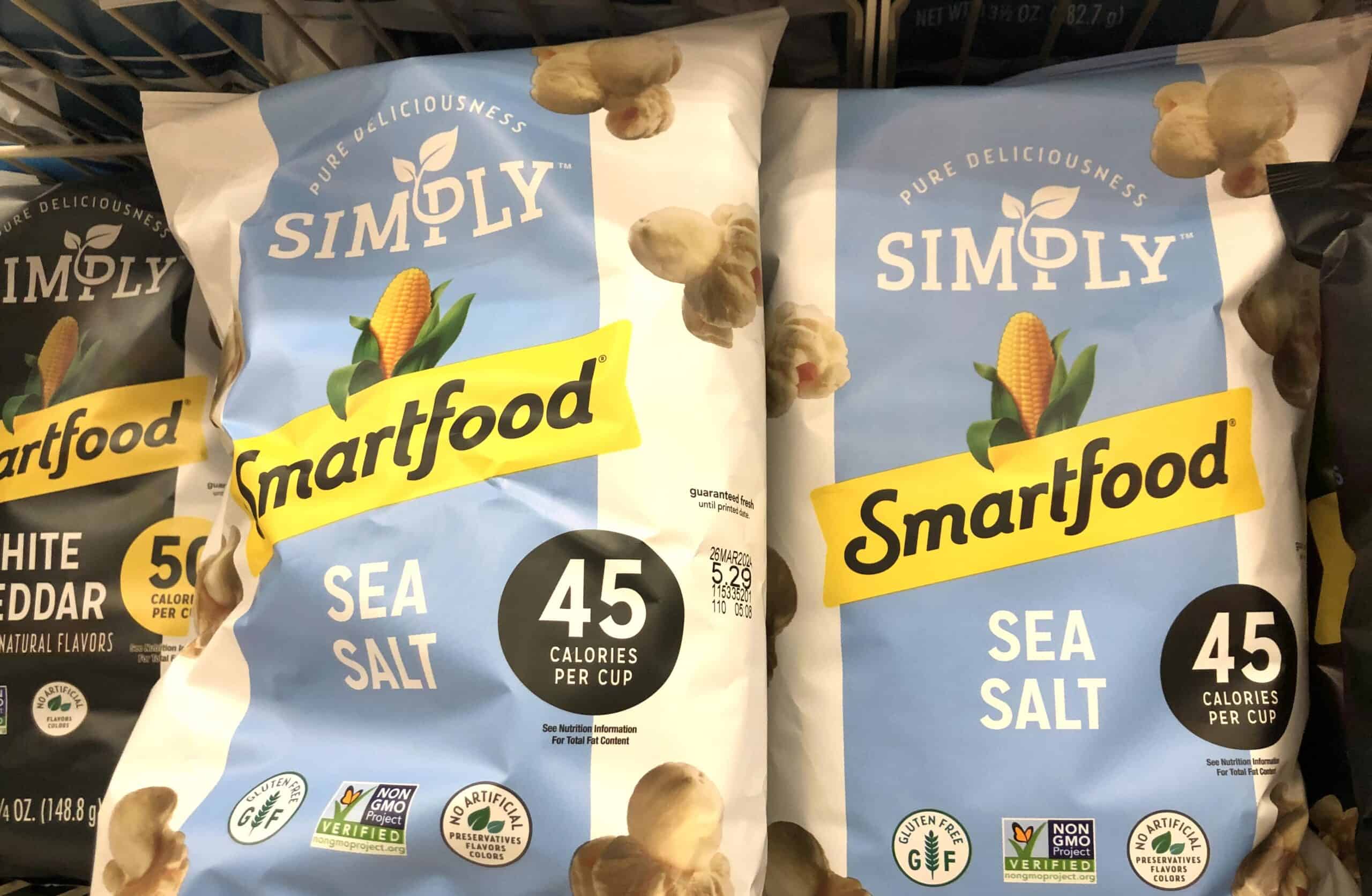
Created by the folks who now make Annie’s Homegrown products, Simply Smartfood popcorn was created to boost the image of pre-popped popcorn, which had the reputation of being an inferior alternative to DIY and microwave varieties. The brand was purchased by Frito-Lay in 1989 but continues to defy expectations for ready-to-eat popcorn. Simply Smartfood popcorn is a wise choice, relying on all-natural ingredients, and real cheese in its white cheddar variety.
Trader Joe’s
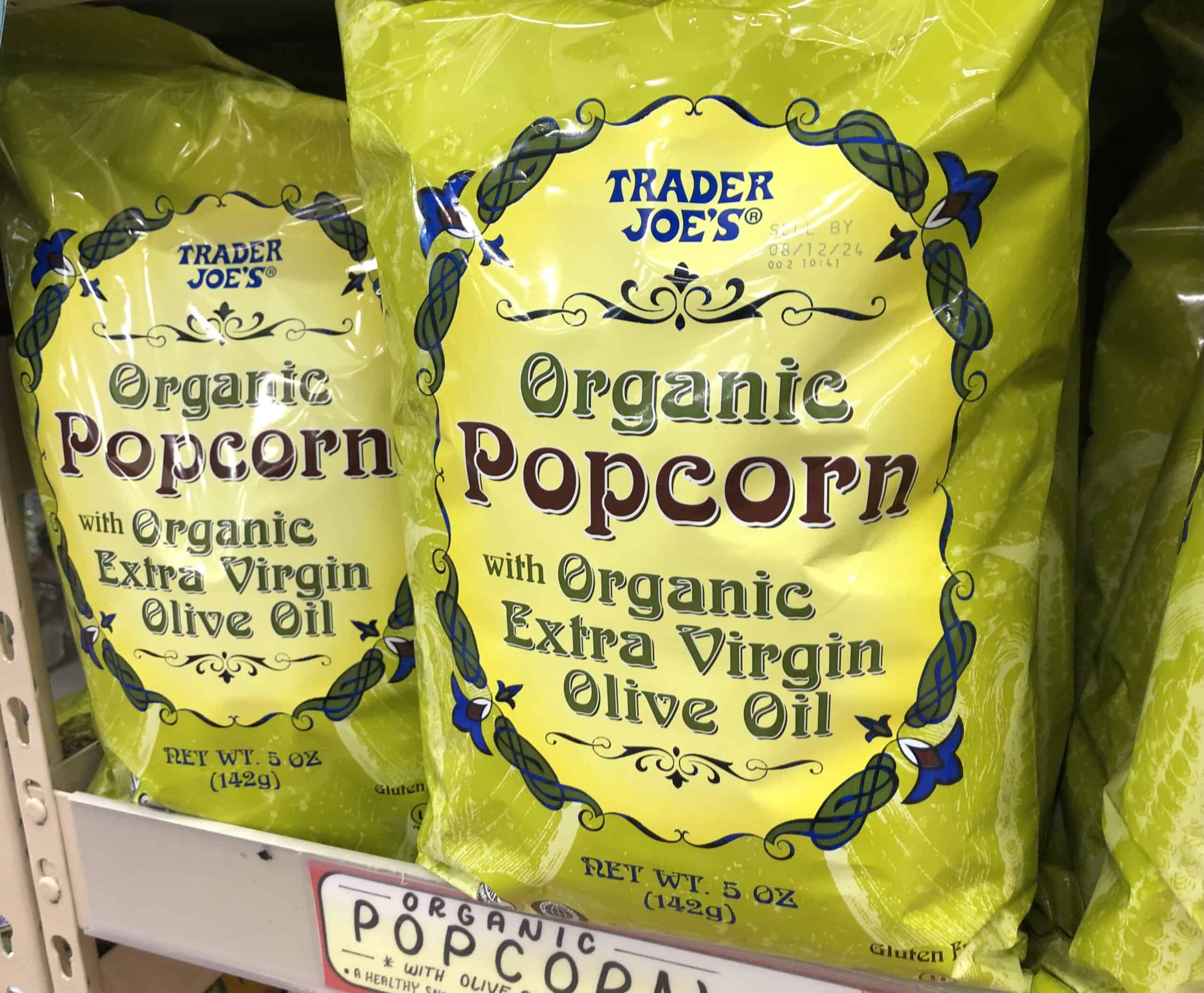
- Parent/owner: Theo Albrecht Jr.
- Introduced: 2011
Something for Practically Every Taste
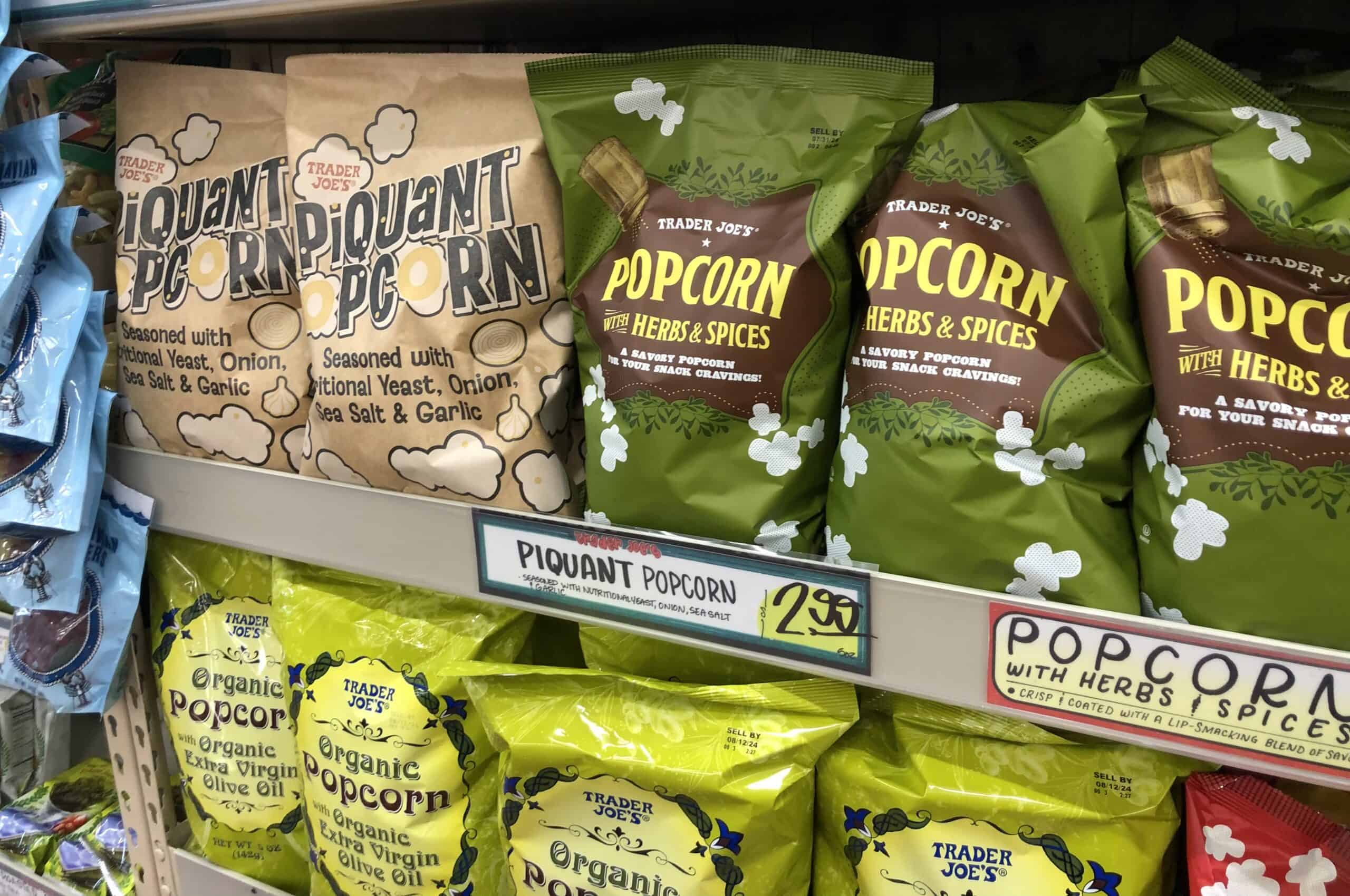
Trader Joe’s has figured out that we love popcorn, and has responded by delivering a bounty of diverse flavors. From boring old organic with extra virgin olive oil to the more exotic Piquant variety seasoned with nutritional yeast, onion, sea salt, and garlic, to their seasonal Thanksgiving Stuffing seasoned popcorn, TJ’s has covered the bases, and with the quality that we’ve come to expect from this brand. So, the next time you get a hankering for popcorn that’s extraordinary, seek ye out a Trader Joe’s.
Essential Tips for Investing: Sponsored
A financial advisor can help you understand the advantages and disadvantages of investment properties. Finding a qualified financial advisor doesn’t have to be hard. SmartAsset’s free tool matches you with up to three financial advisors who serve your area, and you can interview your advisor matches at no cost to decide which one is right for you. If you’re ready to find an advisor who can help you achieve your financial goals, get started now.
Investing in real estate can diversify your portfolio. But expanding your horizons may add additional costs. If you’re an investor looking to minimize expenses, consider checking out online brokerages. They often offer low investment fees, helping you maximize your profit.
Thank you for reading! Have some feedback for us?
Contact the 24/7 Wall St. editorial team.



